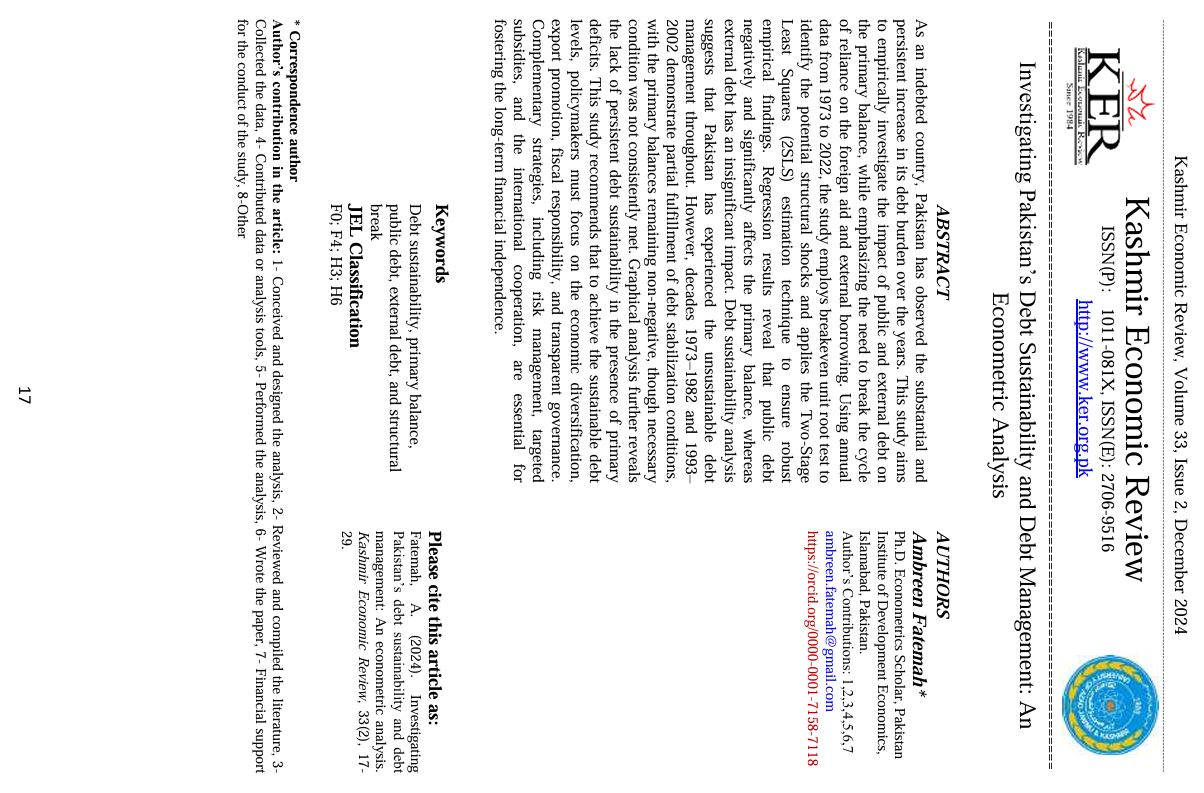Investigating Pakistan’s Debt Sustainability and Debt Management: An Econometric Analysis
##plugins.themes.bootstrap3.article.main##
Resumo
As an indebted country, Pakistan has observed the substantial and
persistent increase in its debt burden over the years. This study aims
to empirically investigate the impact of public and external debt on
the primary balance, while emphasizing the need to break the cycle
of reliance on the foreign aid and external borrowing. Using annual
data from 1973 to 2022, the study employs breakeven unit root test to
identify the potential structural shocks and applies the Two-Stage
Least Squares (2SLS) estimation technique to ensure robust
empirical findings. Regression results reveal that public debt
negatively and significantly affects the primary balance, whereas
external debt has an insignificant impact. Debt sustainability analysis
suggests that Pakistan has experienced the unsustainable debt
management throughout. However, decades 1973–1982 and 1993–
2002 demonstrate partial fulfillment of debt stabilization conditions,
with the primary balances remaining non-negative, though necessary
condition was not consistently met. Graphical analysis further reveals
the lack of persistent debt sustainability in the presence of primary
deficits. This study recommends that to achieve the sustainable debt
levels, policymakers must focus on the economic diversification,
export promotion, fiscal responsibility, and transparent governance.
Complementary strategies, including risk management, targeted
subsidies, and the international cooperation, are essential for
fostering the long-term financial independence.
##plugins.themes.bootstrap3.article.details##

Este trabalho encontra-se publicado com a Licença Internacional Creative Commons Atribuição-CompartilhaIgual 4.0.

